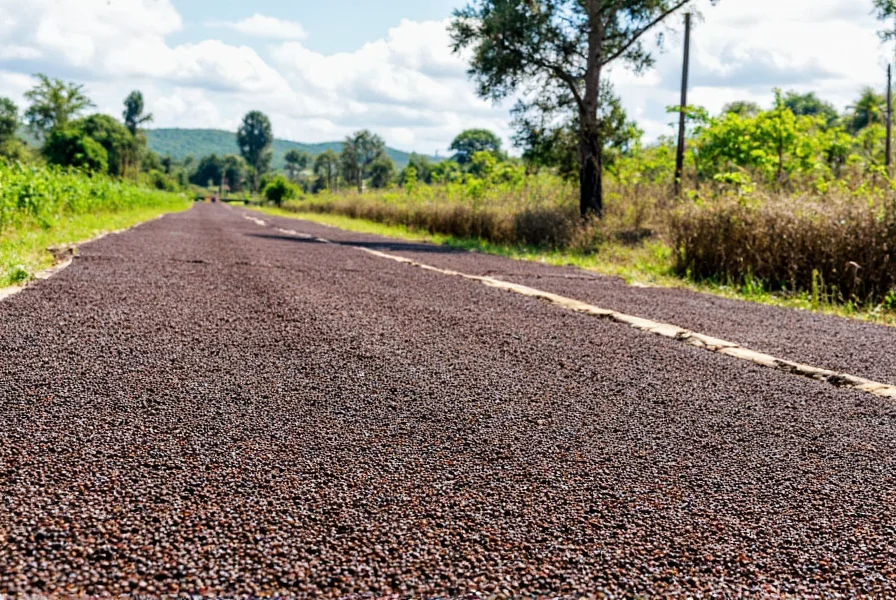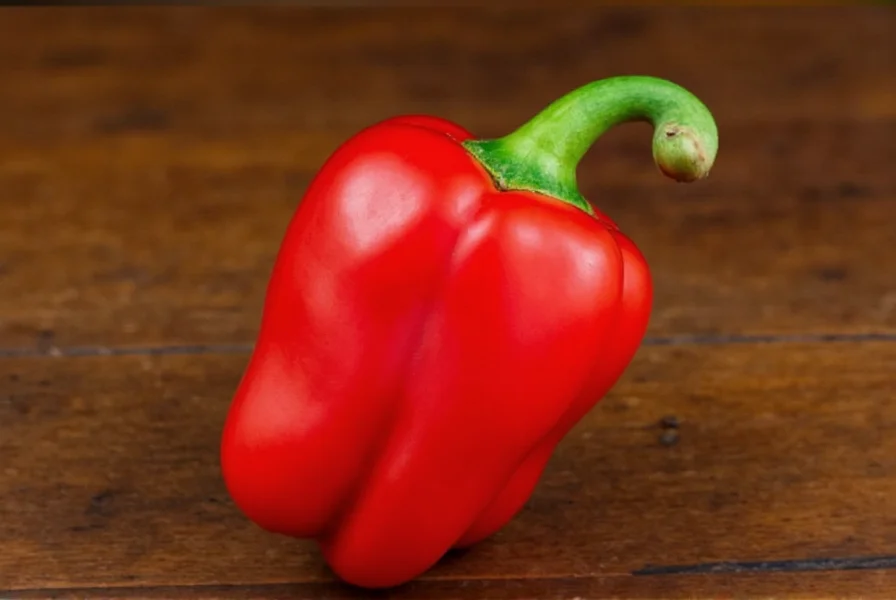When you reach for that shaker of pepper at your dining table, you're using one of history's most valuable and widely traded spices. Despite the term "table pepper" suggesting a unique variety, it's actually just the common black pepper that's been milled or ground for convenient use during meals. Understanding where this everyday seasoning comes from reveals a fascinating journey spanning centuries of trade, cultivation, and culinary tradition.
The Botanical Source of Table Pepper
Table pepper derives from Piper nigrum, a flowering vine in the Piperaceae family native to the Malabar Coast of India. This perennial plant produces small, green berries that turn red when ripe. What we know as black pepper consists of these berries dried until they shrivel and turn black. White pepper comes from the same plant but uses ripe berries with the outer layer removed, while green pepper consists of unripe berries preserved through freeze-drying or brining.

Historical Journey to Your Table
Pepper's history as a table condiment stretches back thousands of years. Ancient Indian texts from 1500 BCE mention pepper's medicinal and culinary uses. By the Roman era, pepper had become so valuable it was literally used as currency—earning the nickname "black gold." During the Middle Ages, Venetian and Genoese merchants controlled the European pepper trade, making enormous profits by transporting it from Indian ports.
The term "table pepper" emerged during the European Renaissance when pepper transitioned from being a luxury item for the wealthy to a more common dining accessory. Elaborate pepper grinders appeared on noble tables, signifying status. By the 18th century, as cultivation spread beyond India to other tropical regions, pepper became affordable enough to appear on middle-class dining tables across Europe.
Modern Production Regions
Today, table pepper production has shifted significantly from its Indian origins. According to the International Pepper Community, the current global production landscape looks like this:
| Country | Global Production Share | Annual Output (Metric Tons) | Notable Growing Regions |
|---|---|---|---|
| Vietnam | 34% | 280,000 | Central Highlands, particularly Đắk Lắk province |
| Indonesia | 25% | 200,000 | Sumatra, Bangka Island, Java |
| India | 15% | 120,000 | Kerala, Karnataka, Tamil Nadu |
| Brazil | 10% | 80,000 | Pará, Espírito Santo |
| Others | 16% | 130,000 | Malaysia, Sri Lanka, Thailand, Cambodia |
From Vine to Table: The Production Process
The journey from pepper vine to your dining table involves several precise steps:
- Cultivation: Piper nigrum vines grow best in tropical climates with consistent rainfall (1500-2500mm annually) and temperatures between 25-30°C (77-86°F). They require support structures like trees or poles to climb.
- Harvesting: Berries are picked when they begin turning from green to yellow-red, typically 6-8 months after flowering. This timing is crucial for optimal flavor development.
- Processing: For black pepper, berries are briefly boiled then sun-dried for 3-7 days until they shrivel and turn black. White pepper undergoes additional fermentation to remove the outer layer before drying.
- Milling: Dried peppercorns are cleaned, sorted, and either left whole for grinders or milled to various fineness levels for pre-ground table pepper.

Factors Affecting Table Pepper Quality
Not all table pepper offers the same flavor profile. Several factors influence quality:
- Harvest timing: Peppercorns harvested at peak maturity contain optimal essential oils for flavor
- Drying method: Sun-dried pepper develops more complex flavors than machine-dried varieties
- Storage conditions: Whole peppercorns retain flavor significantly longer than pre-ground pepper
- Soil composition: Volcanic soils in regions like Sumatra produce pepper with distinctive floral notes
- Varietal differences: Different cultivars of Piper nigrum yield peppercorns with varying heat levels and flavor profiles
Why Vietnam Dominates Global Production
While pepper originated in India, Vietnam has become the world's largest producer since the 1990s. This shift resulted from several factors:
- Government agricultural policies encouraging cash crop diversification
- Ideal growing conditions in the Central Highlands region
- Investment in modern processing facilities
- Competitive labor costs compared to traditional producers
- Development of high-yield pepper varieties suited to local conditions
Vietnamese pepper's dominance has made table pepper more affordable globally, transforming it from a luxury item to a ubiquitous kitchen staple. However, traditional producers like India maintain premium markets for specialty varieties like Tellicherry pepper, known for its complex flavor profile.
Selecting Quality Table Pepper
For the best culinary experience, consider these tips when choosing table pepper:
- Opt for whole peppercorns rather than pre-ground whenever possible—they retain flavor up to 3 years versus weeks for ground pepper
- Look for uniform color and size, indicating careful sorting and processing
- Choose dark, heavy peppercorns which typically contain more essential oils
- Store in airtight containers away from light and moisture
- Grind just before use for maximum flavor impact in your dishes
Conclusion
Table pepper's journey from tropical vine to your dining table represents one of history's most remarkable agricultural and trade stories. Understanding where table pepper comes from—primarily Vietnam, Indonesia, and India—and how it's produced enhances appreciation for this everyday seasoning. The next time you reach for that pepper shaker, remember you're using a spice that has shaped economies, inspired explorations, and seasoned tables for millennia. By choosing quality whole peppercorns and grinding them fresh, you can experience the full complexity of flavor that makes pepper a timeless culinary essential.
Frequently Asked Questions
Is table pepper the same as black pepper?
Yes, table pepper typically refers to black pepper (Piper nigrum) that's been processed for use at dining tables. The term "table pepper" describes its common usage rather than a specific variety. Black pepper becomes table pepper when it's milled or ground to the consistency preferred for immediate use during meals.
Why is Vietnam the largest producer of table pepper?
Vietnam became the world's largest pepper producer due to ideal growing conditions in its Central Highlands, government agricultural policies encouraging cash crop diversification, investment in modern processing facilities, and competitive labor costs. Since the 1990s, Vietnam has systematically developed its pepper industry, now supplying over 34% of global production, making pepper more affordable worldwide while maintaining quality standards.
How does table pepper differ from other pepper types?
Table pepper typically refers to black pepper that's been processed for immediate use. The difference lies in processing: black pepper uses unripe berries dried until black; white pepper uses ripe berries with the outer layer removed; green pepper consists of unripe berries preserved through freeze-drying. All come from the same Piper nigrum plant but offer distinct flavor profiles—black pepper is robust and complex, white pepper is earthier, and green pepper has fresher, herbal notes.
Does the origin of table pepper affect its flavor?
Absolutely. The terroir—soil composition, climate, and cultivation practices—significantly impacts pepper flavor. Vietnamese pepper tends to have bold, straightforward heat; Indonesian pepper (particularly from Sumatra) offers floral and citrus notes; Indian Malabar pepper provides complex woody and piney flavors; while Brazilian pepper often has fruity undertones. These regional differences explain why specialty chefs often specify pepper origins for particular dishes.
How can I tell if my table pepper is fresh and high quality?
Fresh, high-quality table pepper should have a strong, complex aroma when crushed. Whole peppercorns should be uniform in size and color, feel heavy for their size, and have a smooth surface without cracks. When ground, they should produce a fine powder without excessive dust. Properly stored whole peppercorns maintain peak flavor for 2-3 years, while pre-ground pepper loses potency within weeks. For best results, purchase from reputable sources that indicate harvest dates and origin.











 浙公网安备
33010002000092号
浙公网安备
33010002000092号 浙B2-20120091-4
浙B2-20120091-4